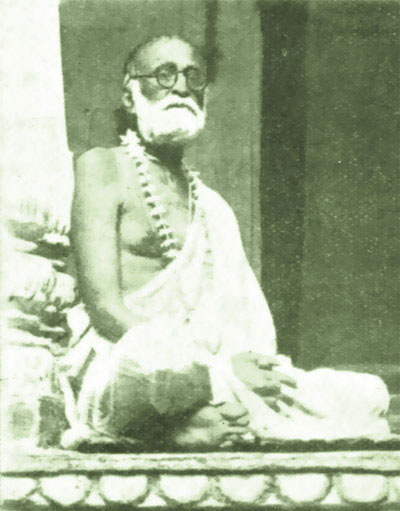śrī śrī guru gaurāṅga jayataḥ!
Year 9, Issue 3 Dedicated to Śrī Śrīmad Bhakti Prajñāna Keśava Gosvāmī Mahārāja Śrī Śrīmad Bhaktivedānta Nārāyaṇa Gosvāmī Mahārāja
Posted: 27 April 2016
nitya-līlā praviṣṭa oṁ viṣṇupāda
Inspired by and under the guidance of
nitya-līlā praviṣṭa oṁ viṣṇupāda
The Dance of Śrī Kṛṣṇa Caitanya
by Śrīla Bhaktisiddhānta Sarasvatī Ṭhākura Prabhupāda

Dancing, singing and making music were exhibited by Śrī Kṛṣṇa Caitanya as the mode of performing congregational worship of Śrī Kṛṣṇa. Passages indicative of this mode are to be found in the śāstras. But from those scattered hints it is not possible to deduce the system itself. The new emphasis on an admitted method of worship is the special and original contribution of Śrī Kṛṣṇa Caitanya.
The śāstras indeed make it obligatory for the brahmaṇas to sing and dance to the accompaniment of music as a part of temple worship. They are at the same time forbidden to take any part, either as performers or spectators, in any musical performance for the purpose of amusement. These provisions may certainly be cited as evidence in proving that the new mode of worship is based upon śāstric injunctions.
But Śrī Kṛṣṇa Caitanya offered His own explanation of His conduct to Prakāśānanda, who objected to what he considered the unseemly practice of dancing and singing by a member of the ascetic order. That explanation is based on certain characteristic passages from Śrīmad-Bhāgavatam.
The Śrīmad-Bhāgavatam declares that the loving devotee of Kṛṣṇa is maddened by the ecstasy of joy. Oblivious of the salutary conventions of theistic society that provide the performance of worship in the most dignified manner and with all due solemnity, the devotee laughs, cries, dances and sings in ecstasy.
Śrī Caitanya also posed another argument in defence of the new mode of worship on the same occasion:
He expressed that His sannyāsa guru instructed Him to simply recite the name of Kṛṣṇa since He was too ignorant to understand the transcendental philosophy of Vedānta, even though such study is enjoined by the śāstras as the duty of an ascetic. But when He had practiced chanting the holy name for a time, He explained, He felt the strange effects of that performing that activity. It made Him laugh, cry and dance like a madman. So He returned His sannyāsa guru and told him that the mantra he had imparted to Him had made Him mad and He begged to be enlightened regarding His real condition. The guru informed Him that He was most fortunate. His chanting of the holy name had yielded pure love for Kṛṣṇa, which is the highest and only desired object of attainment of all spiritual endeavours. Śrī Caitanya then went on to say by way of apology that He did not dance, sing and go about like a madman of His own volition, but that He was made to behave in that strange manner by His love for Kṛṣṇa.
Śrī Caitanya usually played the part of the dancer during the performance of congregational chanting. He would take His position in the centre of the circle of chanters and perform His divine dance. It also appears that the chanting and music of the saṅkīrtana performers were set to the dictates of Śrī Kṛṣṇa Caitanya’s dancing, which is thus understood to be the central function.
How are we to explain that this dance was of the greatest importance in this mode of worship? The name of Śrī Kṛṣṇa is identical with the personality of Śrī Kṛṣṇa. Chanting Kṛṣṇa’s holy name, therefore, is a most legitimate form of worshipping Him, and it the only form that is available to conditioned souls . Or at least this is a self-consistent idea. But why should the dance of Śrī Kṛṣṇa Caitanya possess such superior excellence?
Love is expressed in forms that appeal directly to the senses. Repressing such expression is also a form and activity of love. Love for Kṛṣṇa expresses itself in certain types of bodily activity. These activities are again capable of being expressed in language or by music. Those who form the circle of chanters and musical performers in the dance of Śrī Kṛṣṇa Caitanya seek to follow the activity of love that is engendered by love Himself in the dance of Śrī Kṛṣṇa Caitanya. That dance represents the effects of love and involves the simultaneous use of all the limbs of the body for the expression of love under the overpowering influence of love.
To be continued...
Adapted from The Gaudiya
by the Rays of The Harmonist team
![]()